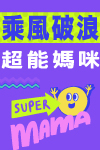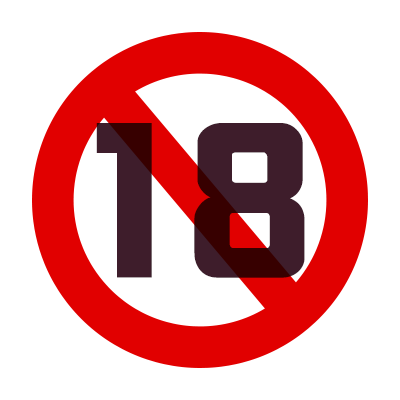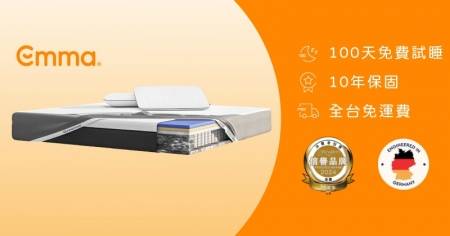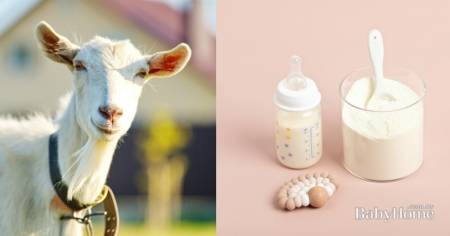這是我從書上抄下來的文章
我順便翻譯出來
希望對要馬桶訓練的媽咪們有幫助
reference: Johnson's mother and baby (Canadian edition)
Starting toilet training
Is she ready to start?
Social pressure to toilet training your toddler can be intense—but until she is physically and emotionally ready, there is nothing you can do to help speed up the process. First, your child’s nerve pathways from her bladder to her brain need to be fully mature. This can happen as early as 18 months and means she will begin to realize when she is peeing or pooping. But she won’t be able to predict when she needs to empty her bowels or bladder—it will be some time before she is familiar with the feeling of needing to go and has the physical control to hang on.
Signs of readiness are easy to recognize; just follow her cues.
Signs to watch out for
The more ready your child is for toilet training, the faster and easier it will be.
Signs that she is ready include:
1. Knowing when she is peeing or pooping—she may stop playing, stand still, look at you, go red in the face, and even try to tell you what’s happening.
2. If she is naked, looking at the puddle she has made and clutching herself
3. Understanding what you are talking about when you show her a potty and explain what it is for.
4. wanting to copy you and use the toilet or wear real underwear.
Introducing the potty
Even though at 18 months your toddler probably isn’t ready to start using the potty successfully, you may like to have a potty around the house to give her the chance to get used to it.
a. choose a potty that won’t tip over when it’s sat on or when your child stands up. It should be curved inside for easy cleaning, with a molded back support, have a splash guard at the front, and a slot for carrying. Your toddler may like to help choose one.
b. Put the potty in the bathroom next to the toilet and encourage her to sit on it before a bath, when you take off her diaper. If she does anything, praise her, if she doesn’t, don’t worry. If she resists sitting on it, don’t make a fuss—just again a week or so later.
c. Let your toddler see you using the toilet—most toddlers enjoy copying their parents.
d. Remember, this is just about introducing the idea of the potty—not getting your child out of diapers. The more prepared your toddler is , the easier toilet training will be.
中文:
馬桶訓練準備工作
孩子準備好了嘛?
給予孩子馬桶訓練常常會有社會加諸的壓力,但是除非孩子生理和心理上都已經準備好,不然是沒有辦法加速這個過程的。
首先,孩子的膀胱訊息傳到腦部的神經路線必須要完全成熟。最早成熟的年齡約莫是十八個月,這表示孩子自己會開始知道他正在小便或者是大便。不過這階段他還沒法子預測何時他需要小便或大便,在他熟悉需要去上廁所的感覺和能夠忍住的時間之前還有一段時期。
孩子是否準備好,是很容易辨別的,只要跟著孩子的暗示就對。
需要注意的徵兆
孩子在馬桶訓練前有越充分的準備,則馬桶訓練的成功機率就會越快並且越容易。孩子準備好的徵兆有
1. 知道他正在尿尿或者大便—他可能會停止玩耍,站著不動,看著你,臉上因為用力而轉紅,甚至試著要告訴你現在正發生哪件事情
2. 如果孩子裸身,他會看著他製造在地上的排泄物,還會抓著自己
3. 當你呈現小馬桶並且跟孩子解釋這是作何使用時,孩子可以了解你的意思
4. 願意嘗試坐在馬桶上或者小馬桶上,即使他不是真正在使用它
5. 想要模仿你使用馬桶或者是穿上內褲
介紹小馬桶
即使十八個月大的孩子可能還無法成功的開始使用小馬桶,你可能會想要在家裡擺個小馬桶好讓孩子有機會習慣它。
a. 選擇小馬桶要選那種當孩子坐下或站起來時不會翻倒的,裡面也應該有些弧度讓人好清理,座椅後端應該要有可以支撐背部的設計,馬桶的前端應該要有個防止灑尿設計和有可以手提的部分。
b. 將小馬桶放在廁所馬桶旁邊,洗澡前或者當你幫他脫下尿布時, 鼓勵孩子坐上去。如果他有大小便,就讚美他,如果他沒有,別擔心。如果他拒絕坐上去,也別小題大作—約莫一個星期後再試試看囉。
c. 讓孩子看大人使用馬桶—多數的孩子喜歡模仿爸媽。
d. 記住,這只是介紹小馬桶的概念,並不是要孩子丟掉尿布。孩子越準備好,馬桶訓練就會越簡單。

馬桶訓練要訣
24 to 36 months
Toilet training
Ready, set, go
Sometime this year your toddler will probably make the big step out of diapers and into underwear, if it hasn’t happened already.
Between the ages of 18 and 36 months his bowel and bladder muscles will mature, helping him to predict when he needs to use the toilet. If you’ve already introduced the idea of the potty and he’s watched you both using the toilet, your toddler will have a definite idea of what’s expected. But how do you know when to take the plunge and start to leaving his diaper off?
Ask yourself:
1. Is he interested in using a potty?
2. Can he indicate when he has the urge to go? Watch for the look on his face—is he clutching himself, aware that something is about to happen?
3. Can he pull his pants and underwear down without your help?
Leaving his diaper off
Buying some underwear together will focus your toddler’s attention. Make it a special occasion—tell him he’s a big boy now and let him choose which design he’s like. Choose a morning or afternoon when you are both at home together, then take off his diaper and explain that without it on he will have to use the potty when he needs to pee or poop. After the fisr couple of mornings or afternoons, start to leave the diaper off for longer and more frequent periods. Meanwhile, give him plenty of reminders and encouragement.
Staying calm
Expect accidents and don’t get angry or make a big deal out of them. For your toddler, using a potty instead of a diaper is all about leaning a new skill. Put any pressure on him and he’ll quickly decide it’s not worth it.
1. Never force your child to sit on the potty, even if you are sure he needs to use it—your toddler likes to think he’s in charge and may prefer to assert himself by refusing to do what you want.
2. Avoid words such as “good” or “bad”—if your toddler has an accident one day, just remind him that tomorrow he may not.
3. If your toddler does have an accident, try to hide any feeling of disgust that you may have—it may not be pleasant, but your toddler may be upset or worried about pooping if he sees you reacting badly.
4. If there are many accidents, it may be a sign that he’s not quite ready yet. Wait a week or more before trying again.
Tips for easy training
a. If you can, start toilet training in the summer, when your toddler can run around in the backyard without a diaper on.
b. Dress your toddler in clothes he can easily manage himself.—zippers on pants and buckles on overalls are hard for small fingers. Pull-on pants with elastic waistbands, skirts, and dresses are best.
c. Suggest that your toddler use the potty after a meal—a story or video may provide an incentive.
d. If you have a few successes, persevere—switching back to diapers occasionally because it’s more convenient may confuse your toddler.
e. When he has an accident, don’t react negatively—just remind your toddler what the potty is for and change him without a fuss.
f. Encourage your toddler with lots of praise and remind him how grown up he is now.
中文:
24-36個月大
準備,就定位,開跑
如果你的孩子還沒有不需要包尿布而且已經可以穿內褲,那麼今年某個時間你的孩子將會有很大的進展,不需要包尿布,而且穿一般的內褲。
在18到36個月大之間,孩子的膀胱和肛門的肌肉會發展成熟,可以幫助他預測何時他需要去上廁所。如果你已經介紹過他小馬桶的概念,而且他也看過父母雙方使用馬桶的情形時,你的孩子將會有個明確的概念知道要預期什麼事情。但是你如何知道你可以貿然冒險開始讓他戒掉尿布?
問問你自己
1. 他有興趣使用小馬桶嘛?
2. 他可以指明他有上廁所的需求嘛? 注意看他臉上的表情—他有緊抓著他自己,知道有某事要發生?
3. 他可以不需要幫忙而脫下褲子和內褲嘛?
戒尿布
和孩子一起買他的內褲將會幫助集中孩子的注意力。把它弄成一個特殊的場合,告訴他他是個大孩子了,然後讓他選擇他喜歡的內褲花色。
選擇一個你們都在的早上或下午,把孩子的尿布脫掉並且告訴他沒有尿布,當他需要小便或大便時就要使用小馬桶。
在一兩個早上或下午之後,開始讓他不穿尿布的時間長一點,間隔短一點。同時要給他很多的提醒和鼓勵。
保持冷靜
要預期意外並且不要生氣也不要大驚小怪。對孩子來說使用小馬桶不穿尿布是學習一項新的技能。給他壓力的話,他會很快速的決定使用小馬桶並不值得。
a. 不要強迫孩子坐在小馬桶上,即使你確定他需要使用—孩子喜歡認為他是掌控者,而且也可能會借由反抗你來堅持己見。
b. 避免使用”好”或”壞”的字眼—如果孩子今天不小心發生一些小狀況,只要提醒他他明天可能不會出狀況
c. 如果孩子真的有些小狀況發生,試著去把厭惡的感覺藏起來—這狀況可能不是讓人很愉悅,但是如果他看到你反應得很負面,你的孩子可能不開心或者擔心大便的事情。
d. 如果有很多小狀況發生,那麼可能是在告訴你孩子還沒有準備好馬桶訓練。等待個一個星期或以上再來試試看吧。








